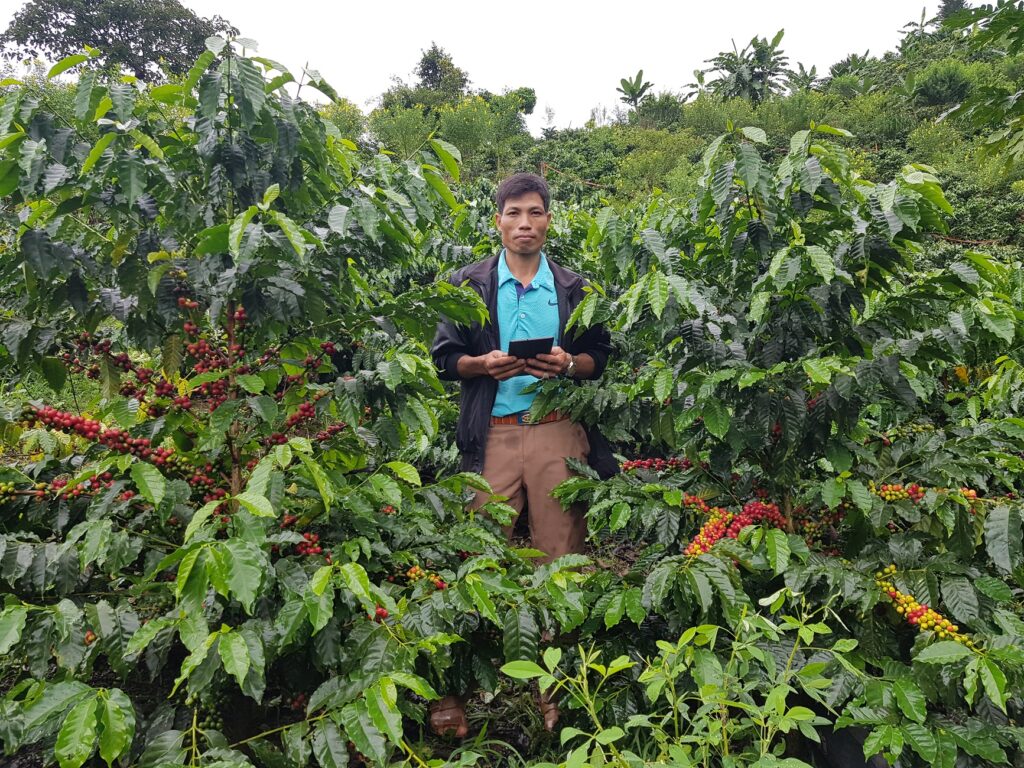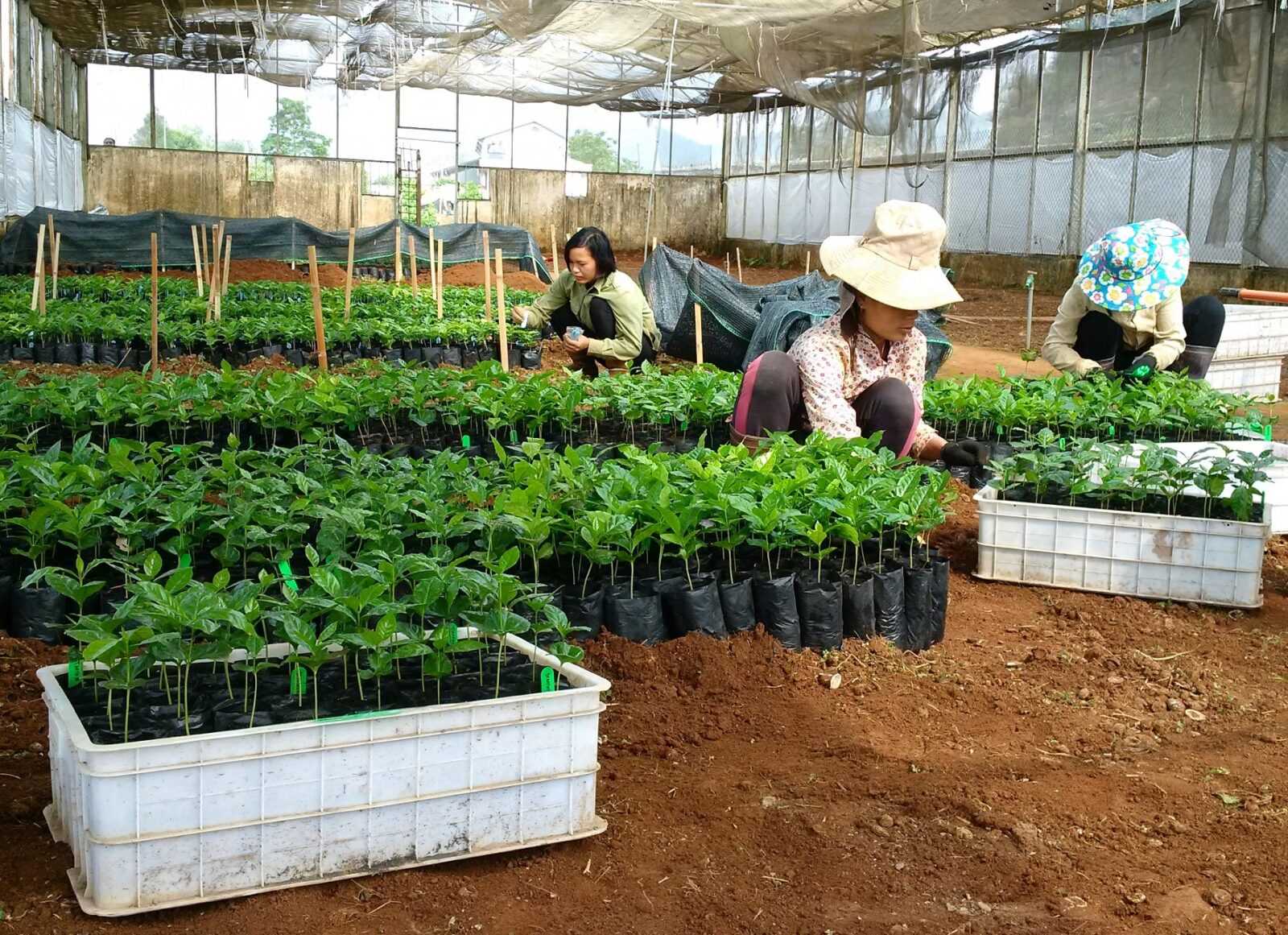PARIS, France – The USDA forecasts Vietnam’s 2021/22 coffee production to be 30.83 million bags. Almost all of that will be robusta (some 29.68 million bags – more than 96%). This means Vietnam is the second largest coffee-producing country in the world. Even at that scale, however, producers across the country face a number of challenges. Ngoc Anh Sprünker is the chair at Detech Coffee, and the President of IWCA Vietnam. She says: “Vietnamese coffee has [historically] not been appreciated and hence [does not receive a high price].
“For example, in the 2019/20 crop year, there were times when traders belonging to multinationals did not pay higher than US $0.90/lb. Farmers can only [lose] at that price.”
Dr. Luu Ngoc Quyen is the Deputy Director at the Northern Mountainous Agro-forestry Science Institute (NOMAFSI). He tells me that the available coffee varieties also pose a challenge.
“Catimor was introduced to Vietnam [in] 1984, but it produces inferior quality coffee when compared to other varieties,” he says. “It currently accounts for most of the arabica coffee production in Vietnam.”
While Catimor is known for its high resistance to coffee leaf rust and high potential yields, the variety has a reputation for low quality. However, Luu notes that this is often an unfair misrepresentation.
“The Catimor variety in Vietnam has been degraded,” he says. “The phenotype is uneven, and its quality is reduced. Therefore, the selection and breeding of new high-quality and high-yield arabica varieties is extremely important.”
Pierre Marraccini is a coffee molecular physiologist at CIRAD, where he has worked since 2001. He has been working on the BREEDCAFS project in Vietnam since 2017, which focuses on coffee bean development, quality, and genetics.
“Arabica is scattered across the mountainous provinces of northwest Vietnam, including Dien Bien, Son La, the Central Highlands, Lam Dong, and Quang Tri,” Pierre says.
He also notes that Vietnamese arabica is undervalued in the global market, mainly thanks to a lack of widespread knowledge about good farm practices. Furthermore, extreme weather conditions, such as the heavy frost in Son La that destroyed more than 3,000ha of coffee trees in 2019, leaves Vietnamese arabica farms vulnerable to climatic hazards.

Planting new coffee varieties in Vietnam?
In 2017, the BREEDCAFS project came to the Son La and Dien Bien provinces, with the aim of resolving the lack of genetic diversity on Vietnamese coffee farms.
Luu says: “The overall objective is to introduce and test new F1 arabica hybrids in order to see if they are well-adapted to [the] region, and to design agroforestry practices that will create high-yield coffee systems. These will be better suited to climate change and hopefully produce high quality.”
Pierre adds: “The new F1 arabica hybrids were developed by CIRAD [and] ECOM more than 20 years ago. They were first tested in several Central American countries.”
CIRAD and BREEDCAFS have imported seedlings of two F1 arabica hybrids and provided them to 12 Vietnamese farmers. F1 hybrids are first-generation offspring of distinctly different plant varieties that have been propagated in varieties.
In total, 40,000 seedlings of Starmaya and H1-Centroamericano have been distributed to local farmers, with Catimor used as a control.
These seedlings are first planted as “demo plots”, managed by the farmers themselves. Initially, in June 2018, the 12 farmers were provided with 400 seedlings each, for a total of 4,800.
NOMAFSI, CIRAD, the Vietnam Academy of Agricultural Sciences, and Agricultural Genetics Institute (AGI) then conducted annual phenotyping to evaluate the growth of the hybrids, and assess the presence of pests and diseases.
The first harvest then occurred from October to December 2020. The green coffee was then evaluated in laboratories by private partners (including Phuc Sinh, ECOM, and illy) to distinguish their physical, chemical, and cup qualities.
Clément Rigal of CIRAD also notes: “Field trials and phenotyping have been conducted at a range of elevations, [so] we can see which variety is best suited to which condition.”
Dao The Anh is the Vice-President of VAAS. He says: “The initial results of the demo plots showed that the new F1 hybrid coffee varieties performed better than the local Catimor plants in terms of yield and quality.”
Positive response from farmers, private partners, and local government has prompted expansion. In the summer of 2020 and 2021, BREEDCAFS has distributed another 35,000 seedlings (for a total of almost 40,000).
They have also kickstarted the accreditation process at a local scale, to keep expanding the adoption of these new varieties going forward. After the end of the project, all the partners involved will continue working together with the local support of ECOM Vietnam to secure accreditation for the F1 hybrids by the Ministry of Agriculture and Rural Development (MARD).

What is the benefit for farmers?
Dao says: “Once these varieties are accredited by MARD, farmers will be able to increase both yields and quality, thereby improving their income.
“These varieties will then be propagated and disseminated at [a] large scale. The local government in Son La and Dien Bien are [planning] to regenerate about 9,000ha of old Catimor plants between now and 2025.”
This regeneration will gradually lead to Vietnamese farmers producing higher quality coffee, with plants that are better equipped to withstand the impact of climate change.
Dao says: “This means that over time, both domestic and international processing companies will pay more attention to the region, and trade coffee at the premium prices.
“This can ultimately benefit the whole region by improving income, being more sustainable, and providing more stable jobs.”
Climate change & income protection
By 2050, scientists predict that as much as 60% of the land that is currently used for cultivating arabica plants could suffer from the impact of climate change.
“Climate change, in the form of more frequently occurring droughts [and higher temperatures], can lead to tremendous crop losses,” Ngoc says. “The new climate-resilient varieties are bred to combat these problems in a better way.”
Shade-grown coffee is by its very nature more stable, and contributes to a more stable ecosystem on-farm. Agroforestry systems improve soil protection and erosion, increase carbon sequestration, create natural pest control systems, and lead to greater biodiversity.
When planting these new varieties, farmers also plant shade and fruit trees among the coffee plants. These additional trees can help them to diversify their income, improve soil health, and defend against environmental hazards.
Ngoc adds that intercropping can be effective, helping farmers diversify their income and creating more resilient ecosystems:
“Detech Coffee and Macadamia Dien Bien are developing a framework for a test phase of 30ha where we intercrop these new F1 hybrids with macadamia plants,” she says. “The intercropping can increase the tree quantity per hectare, which potentially increases income and creates a more diverse ecosystem.”
















